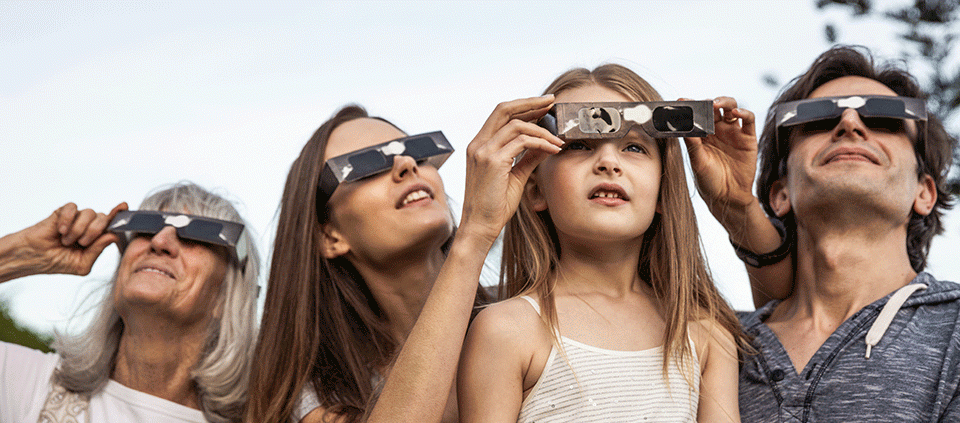Six Yoga Tips for Experiencing the Eclipse

The eclipse is coming—and it’s going to create an awful lot of traffic jams. NASA predicts that Monday will be one of the worst traffic days in history—unless you’re on one of their 11 spacecraft or 50 high-altitude balloons, or aboard the International Space Station, all of which will be capturing and sharing images of this rare celestial phenomenon.
Most of us, however, will be on the ground, and millions of us will be in our cars. Michael Zeiler, an eclipse cartographer, estimates that between 1.85 million and 7.4 million people may commute into the path of totality, which stretches between Oregon and South Carolina. And that’s a conservative estimate—some say that as many as 20 million people might turn out. And that’s just one tenth of the 200 million people who live within a day’s drive of the path.
Since no one’s selling tickets, it’s impossible to predict just how crazy traffic will get. And the fact that it’s mid-August and temps may be quite warm in many areas along the path may boost the potential for road rage. (You can check weather and cloud coverage along the path here.) Having the whole family packed into the car isn’t always a pleasant experience either. All in all, the combination can put you in a less-than-ideal mood for experiencing this once-in-a-lifetime event.
But the teachings of yoga and mindfulness can help (as they do with nearly every aspect of life). If you’re planning to brave the gridlock, here are a few tips to help you enjoy every minute of the eclipse-chasing experience. If you’re watching from the comfort of your own backyard—or in front of a live stream on your computer—keep these tips in mind anytime you find yourself in traffic this summer, hopefully heading to another exciting destination.
Stock up on cooling foods. Ayurveda recommends coconut water to help beat the heat, or add mint, cucumber, or lime to plain water. Fresh fruits and vegetables—melons and cucumbers, for example—and herbs such as mint and cilantro are all cooling and refreshing for the body and mind. Avoid stopping for fast food along the way—oily, fried foods can aggravate pitta, the Ayurvedic quality associated with summer and heat.
Practice loving-kindness meditation in the car. This practice helps open your heart to other drivers around you, even those who are leaning hard on their horns. Here’s how to do it.
Breathe and be present. Staying mindful is of the essence when navigating a packed highway (or a backseat full of squabbling kids). Remind yourself to take long, deep breaths, which automatically calm the nervous system. Instead of constantly scanning for the fastest lane, simply be where you are. Trust that you’ll get there in time (and leave a big buffer).
If you’re stuck in traffic, take a stretch break. If there’s time to get out for a few Forward Bends, great! But if traffic’s not moving but you can’t safely get out of the car, slide back your seat a little to do this seated stretching sequence.
Once you arrive, open your senses and your heart to the experience. Obviously, the visuals are the main attraction here. But during totality, experienced viewers say, the temperature drops, birds stop chirping, and people often feel heightened emotions. Using all your senses and noticing the feelings you’re having will allow you to experience the eclipse on multiple levels.
Savor the awe. Researchers point to two distinct qualities of awe that differentiate it from other positive emotions, such as happiness or gratitude. There is almost a magical quality to it that shifts us from focusing on our small selves to embracing a broader connection. Studies conducted at Berkeley and elsewhere suggest that when exposed to striking images of nature, we are more likely to offer assistance to someone in need or to engage in acts of kindness. Let your eclipse experience stay with you and continue to inform your life in unexpected and beautiful ways.
© Kripalu Center for Yoga & Health. All rights reserved. To request permission to reprint, please e-mail editor@kripalu.org.